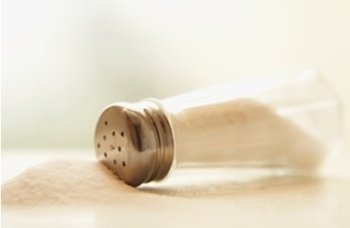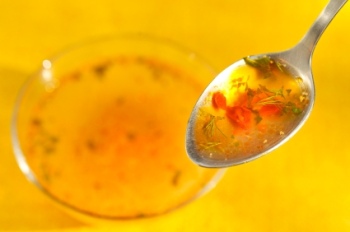Many South Africans are not aware of the dangers of a high-salt diet and many don’t realise how much salt they are eating. In most developed countries about 80% of salt consumed is added to foods at the stage of manufacturing and consumers have no say over how much is added.
During World Salt Awareness Week (21 - 27 March), the Heart and Stroke Foundation South Africa (HSFSA) is joining hands with the WASH (World Action on Salt and Health) campaign to help raise awareness about the consequences of consuming too much salt and to urge people to eat less of it.
“Cardiovascular disease (CVD) is the leading cause of death and disability worldwide,” says Professor Graham MacGregor, Chairman of WASH. “Eating too much salt puts up our blood pressure, which is a major risk factor of CVD, leading to millions of unnecessary deaths each year. If we reduce our salt intake by just a few grams a day, we can all reduce our risk of heart disease and stroke.”
World Salt Awareness Week theme:
This year World Salt Awareness week focuses on Salt and Men’s Health.
Data from the United Kingdom show that, on average, men eat over 2 g more salt a day than women and are less aware that salt can damage their health. Men also have higher blood pressure than women and are less likely to have their blood pressure measured or take action to reduce it. Men also have a shorter life expectancy and are more likely to die prematurely from CVD. This situation may be similar in other countries and it is vital that men reduce their salt intake.
However, women should not ignore this important issue and should encourage healthy low salt habits in their family from an early age. It is easier to grow up with good habits than it is to break bad habits as an adult.
Dangers of a high salt intake
A high salt intake contributes to high blood pressure (BP), which is one of the most powerful predictors of stroke and major cardiovascular events including heart attack and heart failure. Other harmful effects of too much salt are that it increases the risk of kidney disease, kidney stones, osteoporosis and possibly even stomach cancer. This is frightening, and enough to make every South African take heed.
How much salt are we eating in South Africa?
There is very little national data on salt intake, but most South Africans eat more than the World Health Organisation’s (WHO) recommended maximum of 5 g/day (about 1 tsp). Data from a study in Cape Town showed that salt intake is between 7.8 – 9.5 g/day, almost double the WHO limit! Almost half of our intake comes from salt added in cooking or at the table and more than half (almost 1 tsp) comes from processed foods!
What are common sources of salt in our diet?
Bread, cereals and meat products (polony, Viennas, salami, ham, sausages/boerewors, meat pies) are major contributors to salt intake from processed food. In SA, bread provides the greatest contribution to total dietary sodium intake. The most disturbing fact is that South African bread contains more salt than breads in many other countries.
The UK Food Standards Agency (FSA) has set targets for the maximum level of sodium for processed foods in the UK, for example bread has an upper recommended level of 370 mg per 100 g. Some of our breads have 44% more sodium than this. Countries such as the UK, Canada, Portugal and Australia are making progress in reducing levels of salt in bread. It would therefore, be in the best interest of South African consumers to insist on healthier lower salt options which are available elsewhere in the world. With increased demand, the food industry will be more inclined to reformulate their products and reduce the amount of salt added to processed foods.
Other significant sources of sodium in the SA diet are flavour enhancers (stock cubes, Aromat, Fondor,soup/gravy powders). Food labels on these products are often non-existent, so consumers have no idea of their salt content. Some of our soups have sodium levels 84% higher than the UK FSA target and provide more than half a teaspoon of salt per portion.
Benefits of cutting down on salt intake
Randomised trials have shown that a modest reduction in salt intake lowers blood pressure. As high blood pressure is a major cause of cardiovascular disease, reducing salt intake will reduce cardiovascular risk. Cutting daily salt intake globally by 6 grams a day could prevent approximately 2.5 million deaths worldwide.
Salt reduction strategies around the world
Many countries have produced their own salt reduction recommendations. In Finland, population intake reduced from 12g/day in 1979 to less than 9 g/day in 2002. In the UK, salt intake dropped by approximately 10% (from 9.5 g/day in 2003 to 8.6 g/day in 2008) resulting in 6 000 fewer CVD deaths per year. South Africa should follow these examples and start taking action now!
The way forward for salt reduction in South Africa
The HSFSA, research bodies and various stakeholders are already involved in discussions with the Department of Health to start developing a formal salt reduction strategy for SA. Setting reasonable (voluntary) targets such as the UK FSA maximum salt levels for commonly consumed processed foods will encourage the food industry to make gradual and sustained reductions in the amount of salt that is added to foods.
The Medical Research Council (MRC) is currently involved in a global branded food database project with the Australian Division of WASH. This collaboration will help bring together readily available data about the composition of fast foods and processed foods which can be used to drive national and international improvements in the food supply.
Reduce your salt intake by:
- Getting out of the habit of using the salt shaker or salty flavour enhancers at the table
- Using less table salt, stock cubes, soup/gravy powders or sauces for cooking
- Choosing better alternatives to make foods tastier (fresh herbs, spices, garlic, chilli, lemon juice or ground pepper)
-
Checking product labels when purchasing processed foods and
- Opting for LOW salt products more often:120 mg sodium per 100 g or less
- Avoiding HIGH salt foods: 500 mg sodium per 100 g or more
- Eating home-cooked meals rather than readymade meals, takeaways and processed foods when possible
- Swapping high-salt foods such as sausages and pies for lean meat or fish
- Cutting down on foods that are cured, smoked or pickled as they tend to be high in salt
- Keeping healthier snacks on hand, such as fruit or unsalted nuts
Remember: some product labels will give sodium information instead of salt. Sodium is just a part of salt so it is important not to get the two confused. 1 gram of sodium = 2.5 grams of salt.
For more information call the Heart Mark Diet Line on 0860 223 222, email heart@heartfoundation.co.za or visit www.heartfoundation.co.za
Press release - The Heart and Stroke Foundation of South Africa
(Images: HSFSA and iStock)
- (Health24, March 2011)
Read more:
Slideshow: Top 10 salty food culprits
Top 10 foods with hidden salt
New diet guidelines advise less salt




 Publications
Publications
 Partners
Partners











